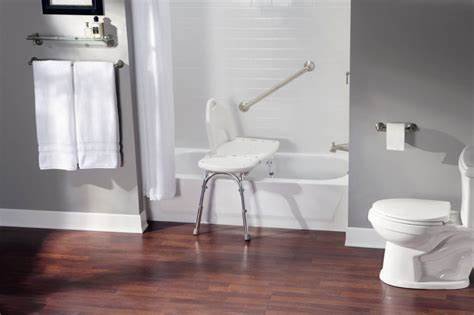Bathroom remodeling projects offer an opportunity not only to enhance aesthetics but also to improve functionality and accessibility. As individuals age, their needs change, and adapting living spaces to accommodate these changes becomes increasingly important. Universal design principles offer a solution by creating spaces that are accessible and usable by people of all ages and abilities. In this comprehensive guide, we’ll explore the benefits of incorporating universal design principles into bathroom remodeling projects, specifically focusing on aging in place.
Understanding Universal Design
Universal design is an approach to creating products and environments that are accessible to people of all ages, sizes, and abilities. It emphasizes inclusivity, flexibility, and usability, ensuring that spaces can be used comfortably and safely by everyone, regardless of their physical limitations. In the context of bathroom remodeling, universal design principles focus on making bathrooms more accessible and accommodating for individuals with mobility challenges, vision impairments, or other disabilities.
The Importance of Aging in Place
Aging in place refers to the ability of individuals to remain in their own homes and communities as they age, rather than moving to assisted living facilities or nursing homes. For many older adults, maintaining independence and autonomy in their living environment is a top priority. However, traditional home layouts and features may not always be conducive to aging in place, leading to challenges with mobility, safety, and accessibility. By incorporating universal design principles into bathroom remodeling projects, homeowners can create spaces that support aging in place and enable them to remain in their homes comfortably and safely as they grow older.
Key Benefits of Universal Design in Bathroom Remodeling for Aging in Place
Accessibility
Universal design features such as wider doorways, zero-threshold showers, and grab bars make bathrooms more accessible for individuals with mobility issues or physical disabilities. By eliminating barriers and obstacles, universal design promotes independence and allows individuals to navigate the bathroom with ease, reducing the risk of accidents and injuries.
Safety
Safety is a primary concern in bathroom environments, especially for older adults who may be more susceptible to slips, falls, and other accidents. Universal design features such as non-slip flooring, well-lit spaces, and strategically placed grab bars enhance safety and reduce the risk of injuries, providing peace of mind for homeowners and their families.
Comfort and Convenience
Universal design principles prioritize comfort and convenience, making daily tasks easier and more manageable for individuals of all ages and abilities. Features such as adjustable-height shower heads, lever-style faucets, and accessible storage solutions enhance usability and ensure that the bathroom remains functional and comfortable for everyone, regardless of their physical limitations.
Future-Proofing
Incorporating universal design features into bathroom remodeling projects helps future-proof the home, allowing homeowners to age in place gracefully without the need for extensive renovations later in life. By investing in accessible and adaptable design elements upfront, homeowners can enjoy the benefits of a safe, comfortable, and functional bathroom for years to come, without the need for costly modifications down the road.
Conclusion
In conclusion, universal design principles offer significant benefits for aging in place, particularly in the context of bathroom remodeling. By creating accessible, safe, and comfortable spaces, homeowners can support their desire to remain in their homes as they age, maintaining independence and autonomy while ensuring their safety and well-being. Incorporating universal design features into bathroom remodeling projects not only enhances usability and functionality but also future-proofs the home, allowing individuals to age in place gracefully and comfortably for years to come.
When planning a bathroom remodeling project with aging in place in mind, consider consulting with a certified aging in place specialist or universal design expert. These professionals can provide valuable insights and recommendations tailored to your specific needs and preferences, ensuring that your bathroom renovation meets the highest standards of accessibility, safety, and comfort for aging in place.


